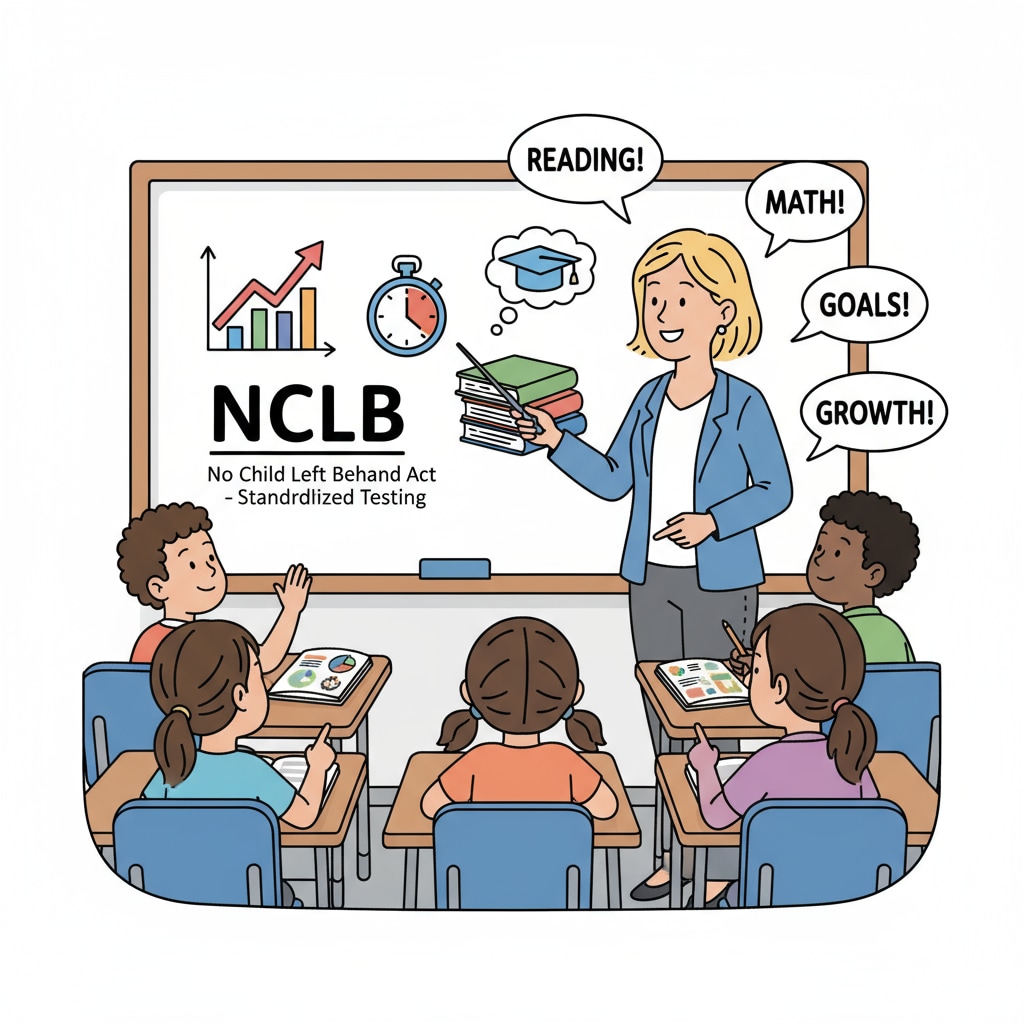The No Child Left Behind (NCLB) Act brought about a significant wave of educational accountability and educational change in the United States. This landmark legislation aimed to ensure that every child received a quality education, regardless of their background. As we explore its impact, it’s crucial to understand how it influenced various aspects of the education system.

The Pillars of NCLB and Educational Accountability
The NCLB Act introduced several key elements of educational accountability. It required states to set academic standards and test students annually to measure their progress. For example, schools had to report student performance data, which made them accountable for the educational outcomes of their students. This new level of accountability was a significant shift in the US education landscape. No Child Left Behind Act on Wikipedia
Transforming Classroom Practices
One of the most notable impacts of NCLB was on classroom practices. Teachers had to align their teaching methods with the standardized tests required by the act. As a result, there was an increased focus on test preparation in many classrooms. However, this also led to some concerns. Some educators felt that it limited the ability to explore more creative and individualized teaching approaches.

For instance, hands-on projects and in-depth discussions might take a backseat to rote memorization and test-taking strategies. No Child Left Behind Act on Britannica
In addition to test preparation, NCLB also emphasized the use of data-driven instruction. Teachers were encouraged to analyze student performance data to identify areas where students were struggling and tailor their teaching accordingly. This approach aimed to provide more targeted support to students, but it also added a new layer of complexity to the teaching profession.
Readability guidance: The paragraphs above clearly explain the impact of NCLB on classroom practices. The use of examples and transition words like ‘however’ and ‘in addition’ helps to make the content more accessible. The short paragraphs and simple sentence structures also contribute to better readability.
Altering School Culture
The NCLB Act had a profound impact on school culture. Schools that failed to meet the performance targets set by the act faced various sanctions. This created a high-stakes environment where the focus was often on improving test scores rather than on holistic student development. As a result, school cultures shifted towards a more results-oriented mindset. Some schools implemented intensive intervention programs for struggling students, while others reallocated resources to areas that would have the most impact on test scores.
The New Face of Educational Leadership
Educational leadership also underwent significant changes under NCLB. School leaders had to take on new roles and responsibilities to ensure their schools met the accountability requirements. They were responsible for implementing school improvement plans, managing data, and communicating with stakeholders about the school’s performance. This required a different set of skills, including data analysis, strategic planning, and effective communication.
In conclusion, the NCLB Act was a powerful force for educational accountability and educational change in the US K12 education system. While it brought about some positive outcomes, such as increased focus on student performance and data-driven instruction, it also had its drawbacks. The complex interplay between accountability, classroom practices, school culture, and educational leadership highlights the need for a balanced approach to educational reform.


